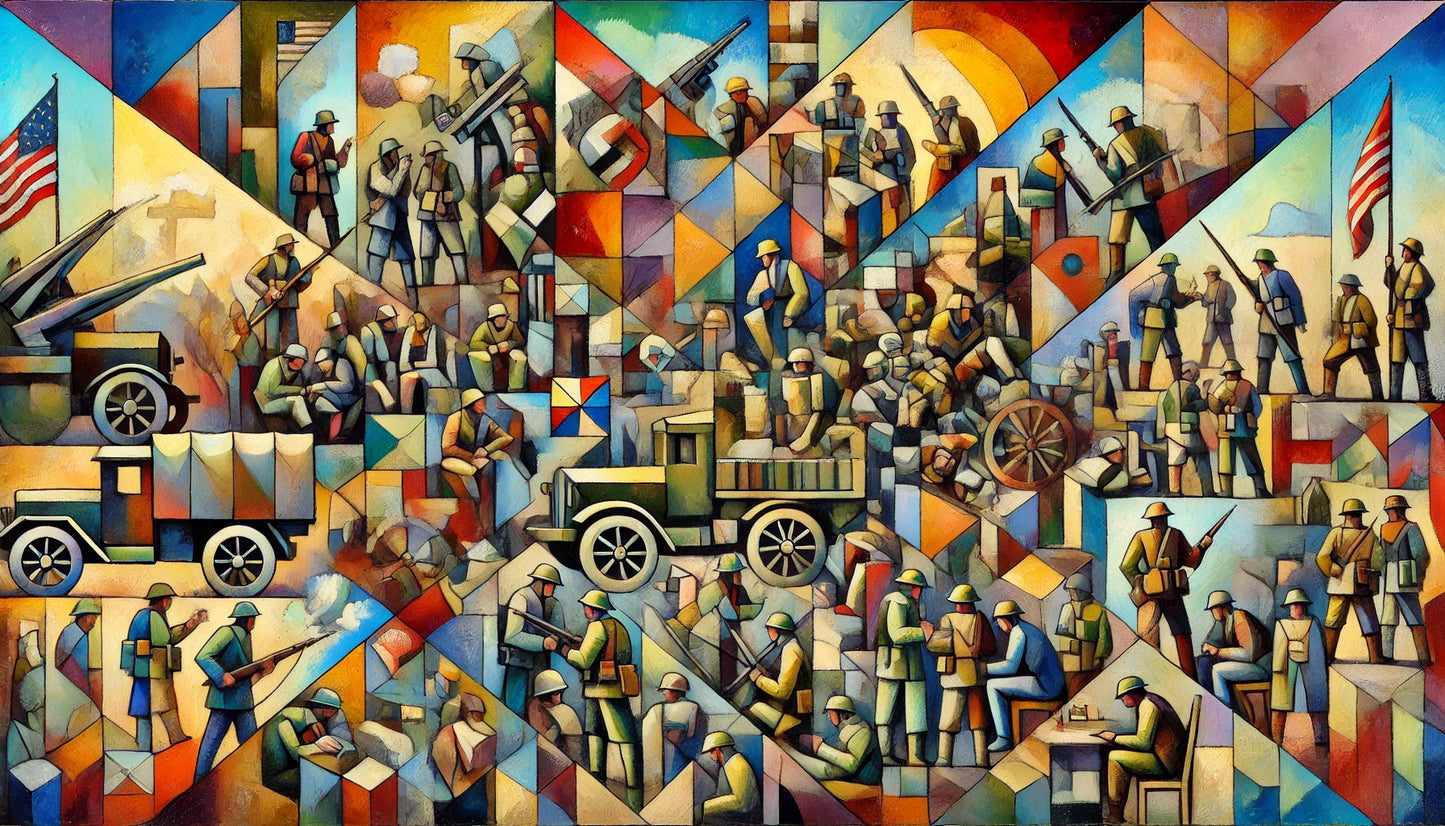Multidimensional Flashback – Fragments of Memory
Multidimensional Flashback – Fragments of Memory
Kubizm
Historia i wojna
Lead time
Lead time
⏳ Delivery time
The order processing time depends on: the production technique, the drying time of the paints, the size of the image and any hand-finishing and protection.
🖼️ Art print on canvas
-
High quality canvas printing :
- Canvas - synthetic canvas 260 g
- Natural Canvas - 260 g cotton canvas
- Stretching the canvas onto the frame
- Quality control and packaging
Total completion time:
🎨 Oil Giclée Reproduction (print + hand-finished)
-
Giclée print on canvas:
- Canvas premium - natural cotton canvas 360 g
- Pigment print drying
- Hand finishing: texturing and oil painting
- Paint drying (depending on layer thickness, medium type and format)
- Stretching the canvas onto the frame
- Quality control and packaging
Total completion time: –
🚚 Ready-made paintings – shipped within 24 hours
Our gallery has a special category called "Ready-Made Paintings" - these are works available immediately, already stretched on a frame or in a ready-made frame.
- They are 100% ready for immediate shipment
- Safe packaging in a reinforced cardboard box
Shipping takes place within: from the date of booking the order.
Image format: Reprodukcja Oil Giclée
Need a different size? Contact us.
Couldn't load pickup availability
1. Title
"Multidimensional Retrospection – Fragments of Memory"
2. Description of the image
"Multidimensional Retrospection – Fragments of Memory" is a cubist deconstruction of history, in which war scenes disintegrate into a mosaic of colors, gestures, and forms. This is not a linear record of events, but a kaleidoscope of experiences: faces transformed into masks of emotion, human silhouettes composed of angles and contours, and the backdrop of war – no longer unequivocally dark, but multi-layered like human memory itself. The painting reveals the intimate side of conflict – not through realism, but through structure. Each shape is a sentence, each color an emotion, and each part a distinct narrative.
3. Technology
Oil on canvas with delicate dry brush strokes and refined details that contrast with expressive impasto and bold brushwork. The composition builds a tension between control and expression—just as war simultaneously disrupts and creates. The painterly texture is full of tension—a clash of textures, colors, and directions.
4. Style
Cubism with a distinctly social bent—in the spirit of Picasso and Fernand Léger , but with a modern narrative. This style combines geometric rigor with emotional content—presenting history not as an event but as a social and psychological process.
5. Colors
Strong, symbolic colors—brick reds, military greens, deep blues, and invigorating yellows. Each color has its own function: red—tension and conflict, blue—distance and reflection, green—relationships that endure. These are not the colors of a documentary, but the colors of lived experience.
6. Invoice
The painterly texture is fragmented and varied: thick layers of impasto create points of emotional intensity, while dry, precise strokes reveal hidden structures of relationships and meaning. The painting is almost sculpted into the plane.
7. Inspiration
It draws inspiration from Guernica , but also from modern visualizations of collective memory—as if war chronicles were filtered through the human heart. The painting also draws on the architecture of memory: walls, ruins, archival photographs reinterpreted. It also draws inspiration from Braque's art, where reality is divided into truths.
8. Message and multidimensionality of interpretation
This is a film about how history isn't uniform—it's fragmented, full of points of view. "Multidimensional Retrospection" shows that every war also involves thousands of relationships: disintegrations, encounters, decisions. It's a space where memory is dynamic—and never complete.
9. Originality and authenticity
Original in form and message – it doesn't reconstruct history, but reinterprets it. Authentic because every element of this composition carries weight. This is not just an artistic work – it is a structure of memory, transformed into a form that demands engagement.
✨ Memory is not a line. It is a system of forces that constantly talk to each other. ✨
Share


